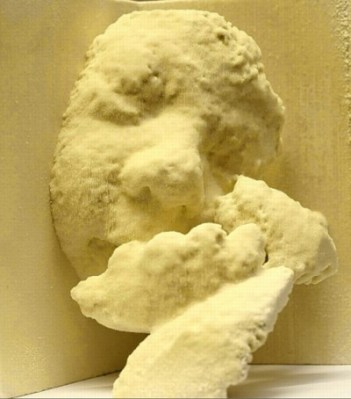Today’s big news, courtesy of Quartz, is about the expiration of laser sintering patents that will change the face of 3D printing in 2014. In short, the reason “good” 3D printers – namely the ones that create solid, injection-molded style pieces – aren’t cheap or readily available is that older 3D printing companies have held the laser sintering process hostage. For example, the Form One printer by Form Labs infringes on these patents even though they detail a printer that uses a laser to fuse fine powder to create an object and the Form One uses a liquid.
That’s neither here nor there, however, because these patents will soon encourage a race to bottom in 3D printer quality, mirroring just about major CE device in the past decade. The first tablets got popular and cheap – and manufacturers flooded the market. 3D TV looked like it was the next best thing so everyone made them. Heck, even small form-factor computers had their day a little less than a decade ago. Once a device is deemed popular by the market, the quality quickly falls and the supply rises precipitously.
To be clear, a good 3D printer doesn’t need to cost $5,000 and I would wager it doesn’t even need to cost $2,000. However, once 3D printers hit the $300 mark, watch out. Quality at this price point will disappear and the costs will be centered on materials, driving the cost of ABS and other materials sky high. Think about the cost of 2D printers vs. the cost of their ink and you see where we’re headed.
I want every home in America to own a 3D printer. But, more important, I want every home in America to own a good 3D printer. 3D printers do no one any good if they are wonky, poorly designed, and under-supported. The current crop, Makerbot and Form Labs included, have a real attention to detail that is missing in nearly every aspect of consumer electronics. I doubt they will stay that way when they become popular.
At this point, 3D printing is in its indie infancy – the Pixies before Surfer Rosa, if you will. Once these patents expire the world will be awash in cheap hardware designed to cash in on a fad. It is up to us, then, to be careful with what we buy.
First, I would support open source as much as possible as well as DIY for educational markets. DIY helps the little guy – the guys who sell the parts that can’t be manufactured at home. The goal of many 3D printers was to create a machine that could make itself. This needs to continue to be a focus.
Second, let’s avoid letting the big guys horn in on this market, shall we? Obviously Stratasys bought Makerbot, much to the chagrin of open source advocates, but once Dell, HP, and Vizio get in on the market, there’s no telling what kind of garbage will be peddled at your local Best Buy. 3D printing is a difficult technology that needs to be brought to the general consumer. I don’t think the huge manufacturers are the guys to do it.
3D printing will truly heat up next year. I’m excited. With a little preparation and understanding, however, we can ensure the future will be less like Palm and more like Apple.
